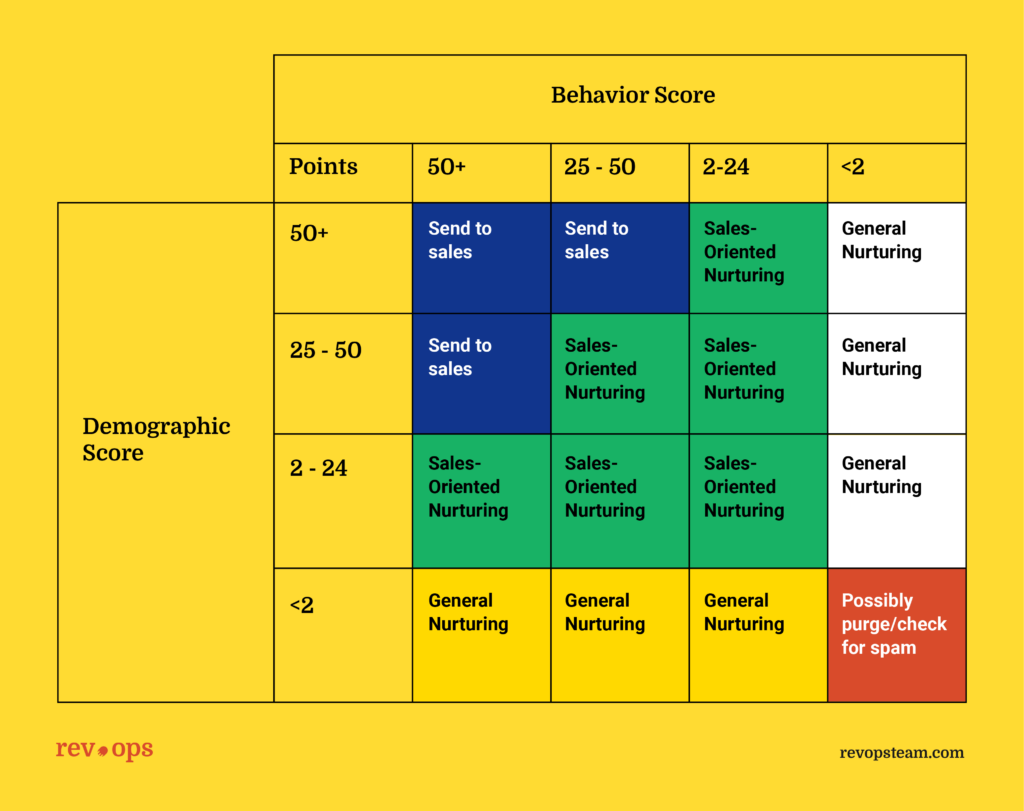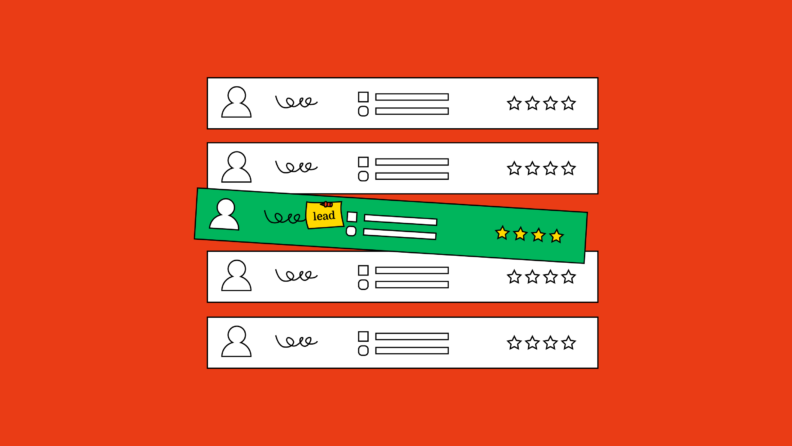If you’re in a growing SaaS startup, you've probably heard this phrase on repeat: "We need more leads." But not just any leads—qualified sales leads that will actually convert into paying customers. The challenge isn’t just generating a high volume of leads; it's about targeting the right ones and guiding them through a well-oiled process that ends in conversion.
In this article, I’ll break down the essentials of B2B lead generation and give you 12 proven strategies to help you scale your efforts without losing your mind (or your budget).
What is B2B Lead Generation?
B2B lead generation is the process of attracting and capturing the contact information of potential customers who may be interested in your products or services.
Think of it as the lifeblood of your SaaS business. Without consistent lead flow, your sales pipeline dries up, and growth stalls.
The 4-Step B2B Lead Generation Process
B2B lead generation is more than just getting businesses interested in your product—it's a structured process for identifying potential leads, engaging them, qualifying them, and turning them into customers.
The key is targeting the right companies and decision-makers. For SaaS startups, this means leveraging data and marketing tactics to generate leads that fit your ideal customer profile (ICP).
Here’s how to do it:

Step 1: Identify Leads
It all starts here. First, nail down your ICP by analyzing your current customers:
- What size companies are they?
- What industry are they in?
- What's their pain point, and how does your software solve it?
Using tools like LinkedIn Sales Navigator and marketing databases (ZoomInfo, Cognism) helps narrow your focus to businesses that are a solid fit.
Step 2: Engage Leads
Once you know who your target audience is, it’s time to reach out. Content marketing, social media, and retargeting ads are great ways to engage your leads. Make sure your website and landing pages are optimized with clear CTAs and easy navigation.
Step 3: Qualify Leads
Not every lead is created equal, so you need to qualify them. This means setting up lead scoring systems—use CRM tools like HubSpot to rank leads based on demographic and behavioral data.
The goal is to focus your energy on leads most likely to convert, saving time for your sales team.
Step 4: Close Leads
Your sales team needs a structured sales process to close qualified leads. Provide demos, follow-ups, and incentives to push these leads toward conversion.
12 Strategies to Improve Your B2B Lead Generation
Now that I’ve broken down the lead funnel, let’s dive into specific strategies you can implement to improve your results.
1. Optimize Your Website for Conversion
Your website is often the first interaction a potential lead has with your business, so make it count.
Use strong CTAs that guide visitors to take action. Think “Sign Up for a Demo” or “Download Our Free Guide.” Make sure your forms are easy to fill out, and avoid asking for too much information upfront.
2. Use Content Marketing to Drive Leads
Content (aka inbound marketing) is your secret weapon for attracting leads. Write blog posts, create whitepapers, and host webinars that speak directly to your target audience’s challenges and they will come to you.
By offering educational content, you build trust and position your product as the go-to solution for their problem.
Case In Point
Challenge
Phase 5 Group, the creator of EON (the first comprehensive continuous improvement management platform), faced the challenge of building an audience for a product that was powerful but virtually unknown. Cold calling and traditional marketing weren’t delivering results, and the company struggled to connect with decision-makers in its target market.
Solution
After researching inbound marketing strategies, Phase 5 Group partnered with SmartBug Media to implement HubSpot’s inbound marketing platform. Together, they:
- Developed customer personas and premium content offers
- Optimized SEO and implemented targeted blog content
- Created lead nurturing paths and a comprehensive inbound marketing strategy
Results
With the new strategy, Phase 5 shifted from cold calls to warm leads, engaging potential customers with personalized content based on their needs. The results exceeded expectations, delivering:
- A 4,200% increase in leads
- A 446% boost in web traffic
- A 400% increase in lead conversion rate within six months
3. Leverage Social Proof and Customer Reviews
Buyers trust the opinions of their peers more than your marketing pitch. That’s why customer testimonials and reviews on platforms like G2 and Capterra are essential.
Make it a habit to ask happy customers to leave reviews or participate in a case study. Display this social proof prominently on your website and sales collateral.
4. Utilize Email Marketing with Segmentation
Email marketing still works—if done right. Segment your email lists based on criteria like industry, job title, or lead behavior. This allows you to send more personalized and relevant content.
5. Run A/B Tests on Landing Pages
Not sure if your landing pages are converting as well as they could? Test different versions of your headlines, form fields, and CTAs. A simple A/B test can reveal which elements are driving more signups or conversions.
6. Embrace CRM and Automation Tools
Automation tools are a game-changer for lead generation. Tools like HubSpot or Marketo allow you to automate email follow-ups, track lead interactions, and score leads based on their behavior.
This keeps your sales and marketing teams aligned and ensures no lead slips through the cracks.
7. Personalize User Experiences with Dynamic Web Pages
Dynamic web pages that personalize content based on the visitor’s industry or previous interactions can dramatically increase engagement.
8. Run Competitor Keyword Campaigns
Competitor keyword campaigns allow you to target leads who are already searching for similar solutions. Use tools like SEMrush to identify which keywords your competitors rank for and create SEO-optimized content around those terms.
Make sure your landing pages highlight a clear unique value proposition so leads know why to choose you over the competition.
9. Build Partnerships and Collaborate on Webinars
Strategic partnerships are an often-overlooked source of leads.
Partner with complementary businesses or industry influencers to co-host webinars or collaborate on content. This expands your reach and introduces your product to new audiences.
10. Implement Lead Scoring for Better Prioritization
Lead scoring ensures your sales team focuses on the leads that are most likely to convert. Use behavioral data (like email opens, clicks, and page visits) to assign points to leads, helping you prioritize follow-up actions.

11. Retarget Potential Leads with Ads
Retargeting is a powerful way to stay top of mind for potential leads. If someone visits your pricing page or reads your blog but doesn’t convert, serve them relevant ads across the web and social media to bring them back.
12. Use Live Chat to Convert More Leads
Live chat tools allow you to engage leads while they’re actively on your website. By offering real-time support and answering their questions immediately, you can convert leads that might otherwise leave without taking action.
Best Tools for B2B Lead Generation
There is no shortage of lead generation tools, but these are a few of the most popular options for scaling lead gen efforts:
- HubSpot CRM: One of the most widely used CRMs for managing and tracking leads. HubSpot offers everything from automated follow-ups to detailed reporting.
- Hunter.io: Perfect for finding email addresses and reaching out to potential leads quickly and efficiently.
- Cognism: A robust B2B data platform that helps you source accurate leads and enrich your existing database for better outreach.
If you dig a little deeper, you can find effective lead generation tools outside of the big names. A few of my favorites are:
Measuring the Success of Your Lead Generation Strategy
Lead generation doesn’t stop once the leads are in your funnel.
You need to track lead generation metrics like conversion rates, lead quality, and cost per lead to measure success. Use your CRM’s analytics to track which tactics are working and make adjustments as needed.
Set up A/B tests on your campaigns and continuously optimize based on performance data. Remember: small tweaks can lead to big improvements over time.
By implementing these strategies, you’ll be able to generate higher-quality leads, streamline your processes, and scale your SaaS business. The key is staying data-driven and continuously refining your approach as you grow.


